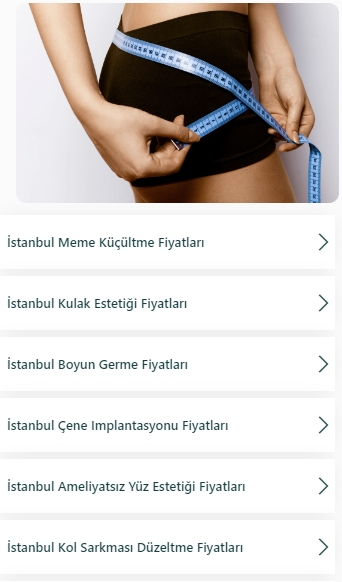
Body Shaping Surgery
- Body Shaping Surgery
- Who Is Body Contouring Surgery For?
- What Are the Benefits of Body Contouring Surgery?
- Post-Operative Care for Body Contouring Surgery
- Which Areas Can Undergo Body Contouring Surgery?
- What Techniques Are Used in Body Contouring Surgery?
Body contouring surgeries can be performed for various reasons, such as correcting body shape after weight loss, removing excess fat accumulations in the waist and hip areas, breast augmentation or reduction, and procedures like arm, leg, or abdominal liposuction. The decision for surgery is made by the doctor considering the patient's health condition, expectations, and desired outcomes.
Who Is Body Contouring Surgery For?
Body contouring surgery is typically a procedure that aims to reshape or enhance different areas of the body following significant weight loss. This type of surgery typically includes multiple procedures such as tummy tuck, liposuction, thigh lift, and arm lift. The goal of body contouring surgery is to improve the patient's body shape and appearance by removing excess skin and fat and tightening the underlying tissues.
What Are the Benefits of Body Contouring Surgery?
The benefits of body contouring surgery include:
- Improved body shape and appearance
- Noticeable change in body contour and visual improvement
- Increased self-confidence and self-esteem
- Greater positive impact in personal and professional life
- Enhanced comfort and feeling of well-being
- Improved overall fit and toned appearance
However, results may vary for each patient. The sustainability of the surgery's benefits depends on the patient's lifestyle, health condition, and other factors. Additionally, proper post-operative care is essential.

Post-Operative Care for Body Contouring Surgery
- Post-operative care for body contouring surgery includes the following:
- The need for tight compression of the surgical area
- Application of hot and cold therapies after surgery
- Regular use of prescribed medications for pain control
- Following the diet and exercise guidance provided by the doctor
- Daily care and hygiene of the surgical area
- Adhering to the recommended follow-up appointments determined by the doctor
Furthermore, it is important to carefully follow the instructions provided by the doctor to ensure that physical activities, daily tasks, and other activities do not harm the surgical area.
Which Areas Can Undergo Body Contouring Surgery?
Body contouring surgery can be performed on areas such as the breasts (breast aesthetics, breast augmentation/reduction), waist (liposuction, waist augmentation/reduction), hips (hip lift, hip augmentation), legs (thigh lift, thigh reduction), and arms (arm lift, arm reduction). These surgeries can be applied to address issues such as tightening, swelling, asymmetry, and other concerns in specific regions of the body.
What Techniques Are Used in Body Contouring Surgery?
Various techniques can be employed in body contouring surgery to address specific issues in different body areas:
- Liposuction: A technique used to remove excess fat deposits from the body, resulting in a smoother appearance.
- Breast Aesthetics (Breast Augmentation/Reduction, Correcting Breast Asymmetry): Surgical procedures aimed at enlarging, reducing, or restoring symmetry to the breasts.
- Waist Aesthetics (Waist Augmentation/Reduction, Liposuction): Surgery performed to remove excess fat deposits in the waist area or enhance waist size.
- Hip Aesthetics: Surgery to lift or enlarge the hips.
- Leg Aesthetics: Surgery to slim down or enhance the appearance of the legs.
- Arm Aesthetics: Surgery to remove excess fat deposits in the arm area or enhance the definition of the arms.
- Other body contouring techniques: These may be applied to address specific needs, such as removing excess fat deposits, defining the abdominal area, or resolving issues in the arms or chest.
These techniques are determined based on the patient's needs, and the most appropriate one is selected by the physician."






